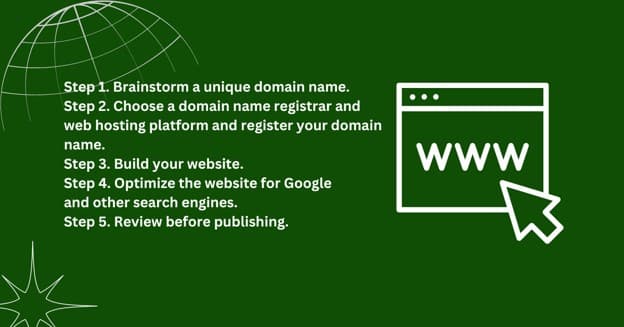Learning how to create a website for your small business is vital!
Over 400 million small businesses cater to the needs of everyday individuals, from clothing to food, computer services, and what have you.
Unfortunately, only 16 in 25 have a website, with 92% considering websites essential for digital marketing. After all, over 2.6 billion consumers shop online.
And if your business doesn’t have an online presence, you’re missing out on the opportunities that e-commerce or online commerce brings.
You might think cost is a concern, but we’ll show you ways to minimize expenditures. You can set up your e-commerce site almost free! Interested? Please read on.

Although creating a website for small businesses entails deep thought, the process is more straightforward and less costly than a decade ago.
You could spend less than a hundred dollars to get your website up and running.
Never worry about the technical aspects, too. Here’s our 5-point plan to get you started.

Every business name is unique (at least on the internet).
Domain names are unique identifiers, allowing the internet to index your business and make it visible on the web.
Hence, you might want to consider your business’s domain name long and hard.
Domain names have two parts: top-level (domain name extension) and second-level domain.
We have already tackled the latter.
As for the former, most businesses use the “.com” extension or TLD (top-level domain). Alternatively, you can add “.biz” (businesses), “.shop” (eCommerce), “.org” (organization), “.co” (company), “.net” (network), “.info” (information), or “.edu” (education.

A unique domain name doesn’t mean anything if you don’t register it.
Doing so gives you ownership of the online business name. You can register with Network Solutions, Domain.com, or other domain name registers. These platforms can charge you up to $20 annually.
A more prudent approach is to choose a web hosting platform with all-in-one solutions. For example, WordPress, Wix, and Squarespace offer a fee for domain name registration and web hosting services.
The best part is these services also provide website-building capabilities, allowing you to create your custom website.

You have two choices. Build a website from the ground up, or choose a website builder. Most small businesses, especially those on limited budgets, prefer the latter. Website builders are robust platforms with drag-and-drop elements to develop and refine a working website with zero technical skills required.
On the other hand, building your website from scratch requires technical skills. In most cases, you must hire a web developer and designers, which can bump website creation costs.

Most internet users will discover your website through Google, Bing, and other search engines, provided you observe proven search engine optimization (SEO) techniques.
SEO enables your website to rank well on search results pages. The higher its ranking, the more visible it is to online users.

Assemble a team to evaluate your website. Check the elements, including their design and positioning. Test on a desktop computer and a mobile device.
Do the page elements adapt to the changing platform? How about the content? Is it meaningful, and does it adhere to the best SEO practices?
You can hit the “publish” button with everyone’s approval.
Please check your website’s performance monthly to understand how else you can improve it.
Making a website for small businesses is easy, although it requires plenty of decision-making.
Modern technologies empower virtually anyone to create a website with zero technical competencies and limited budgets.
You can leverage online shopping’s popularity and see your business grow through the 22nd century.